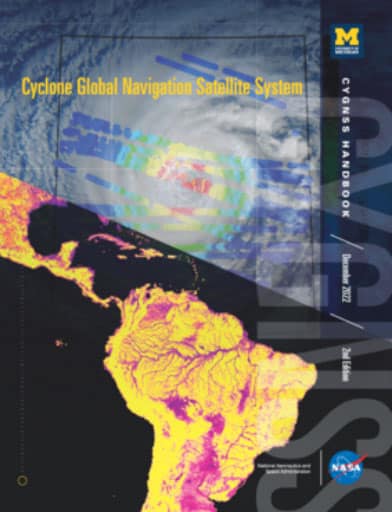
Second Edition CYGNSS Handbook Released
In 2022, the CYGNSS Science Team released a new handbook for NASA’s CYGNSS Mission.

In 2022, the CYGNSS Science Team released a new handbook for NASA’s CYGNSS Mission.
In December 2022, the CYGNSS Science Team released a new handbook for NASA’s CYGNSS Mission.

Provided as an open access document, the 2nd Edition of the CYGNSS Handbook will be available online. It is also being distributed at the 103rd American Meteorological Society Annual Meeting in Denver, Colorado. The handbook covers many updates in technology as well as descriptions of the algorithms for this multifaceted NASA Mission.
The CYGNSS (Cyclone Global Navigation Satellite System) Mission, which was originally designed to operate for six months, has been producing data from orbit since it launch on December 15, 2016.
Many new science objectives and products have developed out of the original mission, which was focused on hurricane forecasting.